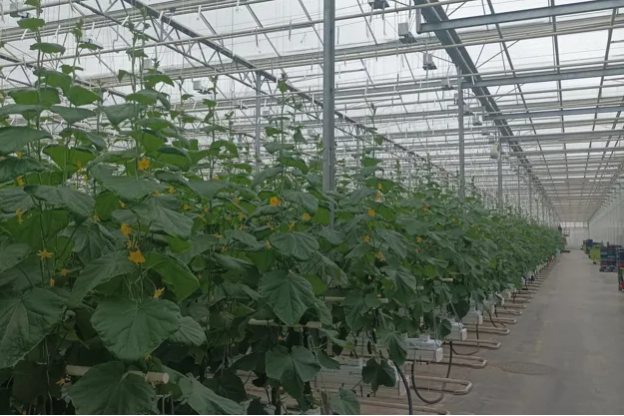
Exhibition time: 17-19 March, 2026 Shanghai, China
 中文
中文

Exhibition time: 17-19 March, 2026 Shanghai, China
 中文
中文
"As soon as I see some plants with virus, I deploy Tobre." So says grower Nerijus Rakickas. With his company, Kietaviškių Gausa, he now has about eight years of experience with the product. Tobre is a biostimulant. Not a crop protection product. Nor does it kill a virus, but it does make the plant stronger, puts more energy into the plant, and therefore helps plants grow through virus symptoms, explains Lithuania's biggest grower. "I have had good experiences with it."

Cucumber green mottle mosaic virus
Nerijus first came across Tobre after he sought advice from colleagues in Poland due to problems with cucumber green mottle mosaic virus (CGMMV). "They advised me this product, which had a different name at the time. I bought 25 liters, put it in 1 section, and as I remember it, no virus damage could be seen in the new leaves on the top of the plant. The plant had grown through it."
The grower uses the product only when necessary, he stresses. "That is when we come across the first plants with virus symptoms during the weekly inspection round in the greenhouse." From Lithuania, samples for laboratory tests to test for virus regularly go to the Netherlands. Nerijus also works with plant sap analyses. "If you let the virus get out of control, you are too late," he says.
Preventive
John van Ruyven of JVR Tecmar nods. He is also at the video call and has been supplying Tobre to growers for half a year now. "I was not familiar with the product before, but after talking to users, I am now convinced that it works well," he says.
With Nerijus, he is now looking at whether growers can also start using it preventively. For now, the Lithuanian grower will use the product as soon as he sees the virus. "I drip it along with my irrigation water, and a week later, I also spray the product on the plants. I repeat that after a month after that." Mixing with other products, he does not do. "Intervening with chemicals, I try to avoid, also with the use of Trichoderma fungi."

Dripping and spraying
The advice on the label is to dose 5 liters per hectare through regular watering three times a week. Growers spraying the product are advised to apply 20 liters per hectare every two weeks. John: "Adding Tobre to the irrigation water does seventy per cent of the work is the experience, spraying takes care of the other thirty per cent."
For optimum effect, the advice is to apply the product at such a time that the crop can absorb the product well overnight. "Between the last gift in the afternoon and the first gift in the morning, the moisture content in the mat drops about 12 to 15 percent", John cites the advice for use. "That drop is the time to apply Tobre."
On the large farm, where they grow cucumber, tomato, and lettuce, the Lithuanian grower sees problems with CGMMV, especially when there is a lot of irradiation and summer temperatures rise. Recently, however, the virus turned up in his greenhouse anyway. When we speak to him, the end of March is a sunny spring day with outside temperatures around 15 degrees. "I have just sent John a video of how the plant has since grown through the virus symptoms again," he informs us.
Water quality
In the Venlo greenhouse, they grow cucumbers, both long cucumbers and snack cucumbers, on high wire. Nerijus grows both exposed and unlit. In lighted cultivation, for him that means two or three cycles a year, in unlit cultivation two cycles. Virus-resistant varieties do not always grow. "In summer, yes, when the risk of virus is highest, but I notice that sometimes the productions are lower with a resistant variety. That's why we also grow non-resistant varieties."
His varieties come from Dutch breeding companies. The water he uses to feed the plants comes from the air as rain, from a spring in the ground, or from a nearby lake. Especially with the latter water, the grower knows to be careful. "With water from the lake, we watch out carefully because of the danger of fungal infections such as Fusarium, Pythium, or Phytophora." To ensure good, disinfected, clean water, he counts on UV-C disinfection and hydrogen peroxide. "We dose that along."
International testing
To further improve his irrigation water, he is also considering purchasing a Vital Oxidyzer. A product from John that allows growers to boost oxygen levels in the water to irrigate plants. "And eliminating the need for growers to use peroxide or chlorine to keep their drip system clean." Possibly a useful addition for the grower in Lithuania with currently 16 hectares of greenhouse. "Right now we are building a new greenhouse," he says.
John, meanwhile, is also testing Tobre in the Netherlands. "A few Dutch companies are testing with it. There, it is also mainly about the cucumber fur virus, although I have also already seen good results in the US with a grower in tomato with problems with ToBRFV."
Source from:Hortidaily.com